As Brendon McCullum recently became the first New Zealander to score a triple century, our sports editor Clayton Murzello culls out what other Test triple centurions said about their feat in their biographies
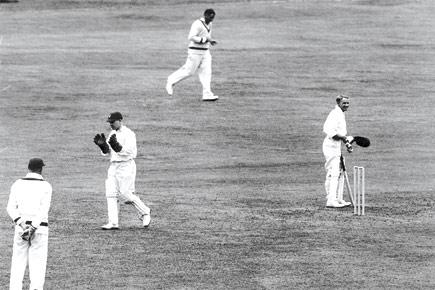
Don Bradman (Australia) 334 vs England at Leeds in 1930
We were on top in the Third Test at Leeds (the second Test at Lord’s was won by Australia), although it ended in a draw. The match was memorable because of my own score of 334, at that time a world record in Test Cricket, a feat later to be excelled by Leonard Hutton.
ADVERTISEMENT
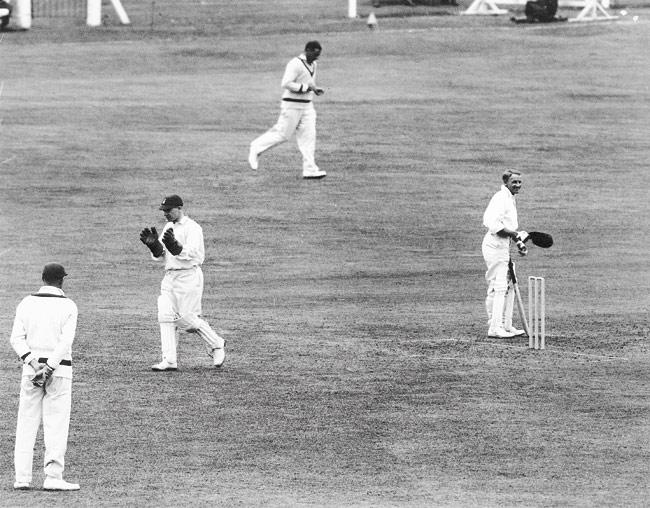
Don Bradman salutes the crowd after passing 300 on his way to a then record score of 334 at Headingley against England in 1930
Whilst admitting that my form was excellent, I have always maintained it was not such a good innings as the previous one at Lord’s. It was made at perhaps a faster rate and included a century before lunch on the first day after (Archie) Jackson had been dismissed for 1, but there was blemishes in stroke play of which I was well aware.
An Australian philanthropist, Mr A E Whitelaw, sent me a cheque for 1000 pounds “as token of his admiration.” I was not the only Australian to be so rewarded by this unostentatious lover of sport. It was indeed a generous token.
Courtesy: Farewell to Cricket by Don Bradman (Published by Hodder & Stoughton in 1950)
Hanif Mohammad 337 vs West Indies in Barbados in 1958
Pakistan were bundled out for 106. On the third afternoon, we were asked to follow on (on January 20, 1958). I walked in again with Imtiaz Ahmed. With Pakistan facing a deficit of 473 runs, defeat was all one could think of. I was concentrating hard. The heat was exhausting.
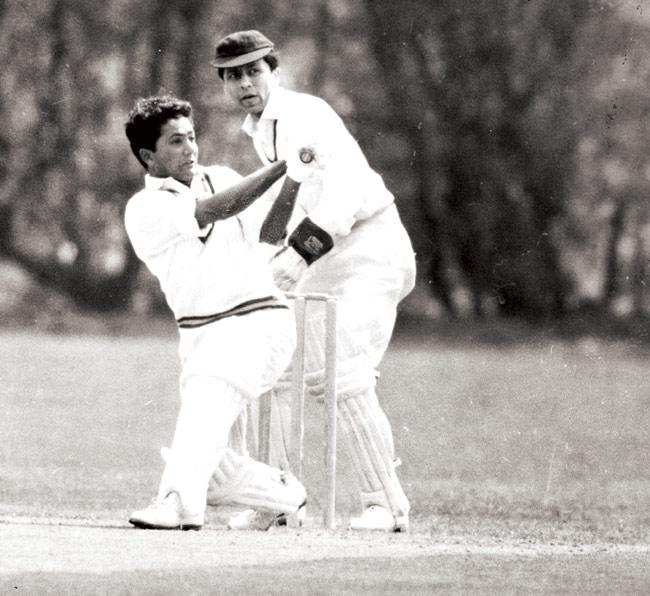
Hanif Mohammad
I was taking as much as strike as possible and was successful in swaying away from the fearsome Gilchrist (Roy) bouncer. I was not in the habit of ducking away from a rising ball. Being short, the delivery usually passed over my head without causing much harm.
Once I tried to hook him, and between overs Walcott (Clyde) advised me not to try that again for he was too fast for me. I paid heed to that advice which helped me. Before the start of the final day’s play, I was in the nets getting ready for my last fight back of the day. To my surprise, Eric Atkinson came to bowl to me in the nets. He was playing in the match and he was the only bowler to get some movement on that wicket.
I was unbeaten on 270. I started in the same vein, not prepared to take chances against Gilchrist, Atkinson brothers, Sobers or Valentine. I mostly played off the back foot on a wicket which started to deteriorate. Eric Atkinson had this unusual habit of whistling tunes during his run-up so I complained to the umpire. But when he stopped whistling, there was something missing. So I requested him to continue his whistling and then after lunch I reached my 300.
Courtesy: Playing for Pakistan by Hanif Mohammad. Published by Hamdard Press
Len Hutton (England)
364 vs Australia at The Oval in 1938
I sometimes wonder if it wasn’t the second worst happening of my career to become a record-breaking national celebrity at an age when I had just qualified to vote. It wasn’t that I lost my head in the clouds; quite the reverse.

Hutton deals with a ball from Athil Rowan in emphatic fashion during England’s innings in the final Test against South Africa at the Oval, London in 1947. Pics/Getty Images
Proud as I was to have scored 364 against Australia and to have overtaken Don Bradman’s record, which I had watched spellbound as a schoolboy at Headingley eight years before, I was still capable of being overwhelmed by the suddenness of fame and worried by its penalties.
No doubt some might deem it highly implausible that a young batsman able to stay for almost 14 hours in a Test match could be vulnerable to pressures and private misgivings. The public might have seen me as a dedicated, single-minded, perhaps even ruthless, scoring machine, but the truth was that I was shy and retiring by nature.”
Courtesy: Fifty Years in Cricket by Len Hutton (Published by W H Allen in 1984)
Gary Sobers (West Indies)
365* vs Pakistan at Kingston in 1958
When played ended on the third day, I was 228 not out and Conrad (Hunte) was 242. As it was a six-day Test, there was time for one of us, or maybe both, to set a new individual Test record. Normally, I sleep well when I eventually go to bed, admittedly later than most people, but on this occasion I had a restless night.
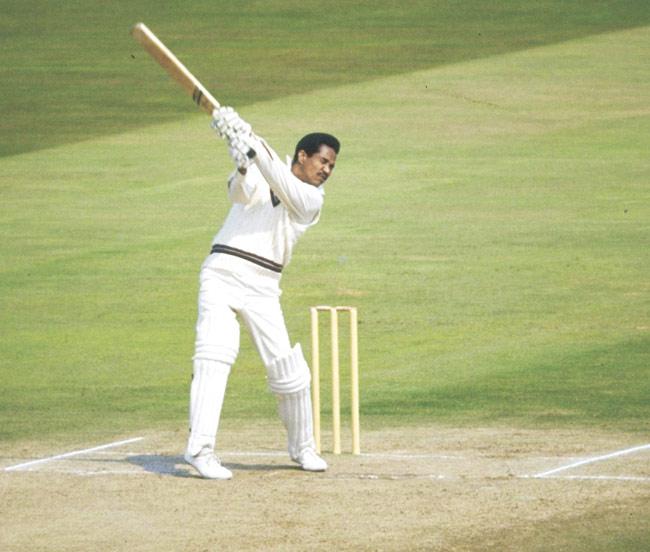
Gary Sobers
Next day: The gates were shut, and the crowd was talking excitedly of the next record once I passed George Headley’s 270, the previous highest by a West Indian. The taking of the new ball accelerated the scoring, as usually happens when two batsmen are set. A single off Fazal (Mahmood) took me to 300. I was the first West Indian to reach that figure in Tests. I tried not to think of the figure 365, but it was now impossible not to do so (Len Hutton’s score was 364).
When on 363: When I faced Hanif (Mohd) again, he asked the umpire if he could bowl left-handed. ‘You can bowl with both hands if you like,’ I said. I pushed his first ball into the covers, Clyde (Walcott) called and off I went. Sabina Park was in a state of bedlam. There were no high fences then, and hundreds of spectators ran on to engulf me. I was overjoyed. It was something unique.”
Courtesy: Sobers — Twenty Years at the Top, Sir Garfield Sobers with Brian Scovell (Published by MacMillan in 1988)
John Edrich (England) 310* vs New Zealand at Leeds in 1965
The ‘Triple Ton Club’ has few members. Gary Sobers, Hanif Mohammad, Bobby Simpson and Bob Cowper besides myself, have joined a list that was very limited until 1957.
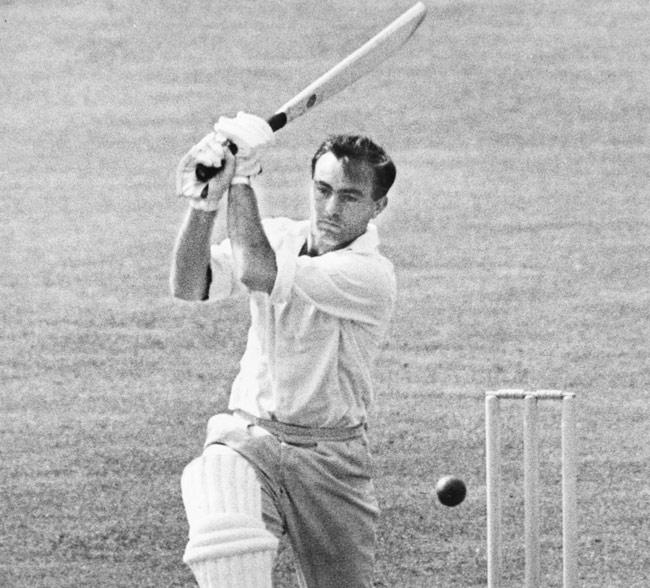
England batsman John Edrich in action against Worcestershire during Surrey’s second innings at The Oval in the 1960s
It had been a spasmodic innings: I had quiet periods, then occasionally there seemed more chances, and I would cut loose, giving my shots all the power I could muster. Against Brian Yuile’s left-arm slows and Vic Pollard’s off-breaks, I really let my front-foot drives go.
I was dog-tired that night, but next day the innings was resumed and I can’t recall having any special ambitions regarding the ultimate end. We wanted more runs, so I continued as well as I could, always looking for the ball to hammer.
With only 16 added to the total, Kenny Barrington was caught at the wicket for 163 when we had made 369 in partnership, breaking a number of records on the way. I passed 200. Never in my life had I been timing the ball so well. This was the innings of my career — not because it became the highest, but because I was using every shot I knew and nearly all the shots were coming off.
I clubbed my way through the third century, and by mid afternoon, I was a boundary away from 300. There was no time to mediate. Dick Motz ran in and bowled, I let fly, and the ball was through the off-side for four. A few minutes later Mike Smith declared the innings closed, and we set about dismissing the Kiwis. Not that everyone was satisfied. ‘Why wasn’t Edrich allowed to break Sobers’ world Test record?’
Some people argued that a further half hour might have been enough for me to slip past Gary’s 365. But cricket matches are primarily for the winning, and the record shows that we won this one with only minutes to spare before the rain came down.
Courtesy: Runs in the Family by John Edrich Published by Jaico Books in 1970)
Matthew Hayden (Australia) 380 vs Zimbabwe at Perth in 2003
Obviously, the Zimbabwe side we confronted in Perth was one of the weaker Test outfits I faced, but I don’t think I ever hit the ball better in Test cricket than I did in that innings. The force was with me. When I raised my first century of the innings, I decided to wear my old baggy green cap the same one I’d received for my first Ashes tour in 1993.
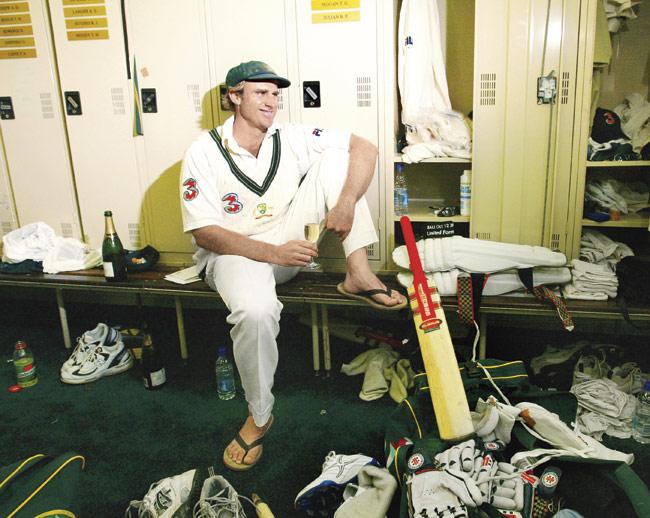
Australian Matthew Hayden relaxes in the Perth dressing room after breaking Brian Lara’s world record of 375 in 2003
After stumps on day one, when I was 183 not out, I told Kell (Hayden’s wife) over the phone how enjoyable it was batting with Stephen Waugh in my baggy green, the cap he did so much to popularise as an exalted part of Australia’s cricketing heritage.
Normally after a day at the crease you wake up feeling a little drained, but my extra training at Stadbroke meant I felt as fresh on the second day of the innings as I had at the start of the first. My concentration was still good and I was seeing and hitting the ball just as clearly.
Sometimes those things can change overnight too, which is why players with big scores often get out early in the next day's play. So I stuck at it, and kept scoring. I faced 438 balls in ten hours and the only shot that didn’t go where I wanted to was the one I got out on.
For the rest of the time I felt in total control. I’ve never been a stats junkie, so I genuinely didn’t know until that day that 334 was a magical number in Australian cricket, the highest Australian Test score ever, held jointly by Mark Taylor and Don Bradman. That’s one of the reasons I was pretty restrained when I passed it – it had never been my Everest.
Courtesy: Standing My Ground by Matthew Hayden (Published by Harper Collins in 2011)
Brian Lara (West Indies)
375 vs England at Antigua in 1994
On 286, between two interruptions for rain, I played my first false stroke. A delivery from Andy Caddick bounced more than I expected, and trying to steer it to third man, I edged the ball close to Jack Russell’s left glove. It was not a chance, Russell did not touch it, but Caddick let out a roar of frustration for which he could be forgiven.
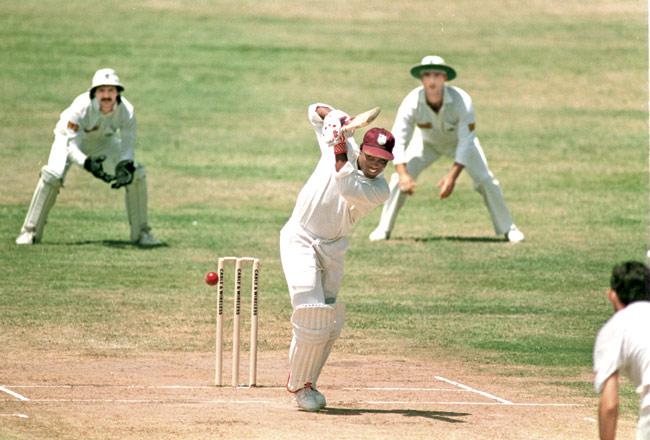
West Indies’ Brian Lara during his record innings of 375 during the fifth Test against England at the Recreation Ground in St John’s, Antigua. Lara broke Sir Gary Sobers’ 365-run mark which stood as a record since 1958. In 2004, Lara scored 400 against England
Chanderpaul was constantly speaking to me, urging me to keep my concentration and not give it away. For a 19-year-old, he showed amazing maturity, and I shall always be grateful to him for the part he played in my success.
I ended the day on 320, and the minute the umpire removed the bails at the end of play, one thing was flashing in my mind the figure 365. I spent an hour after the day’s play in the dressing room, trying to come to terms with the events that had taken place and those that were hopefully still to come.
Cricket watchers in Antigua do not necessarily need events such as this to maintain their carnival spirit! But somehow this time it seemed like the party would go on all night, through to morning and until the record was broken.
Courtesy: Beating the Field, Brian Lara with Brian Scovell. (Published by Partridge Press in 1995)
Virender Sehwag (India)
309 vs Pakistan at Multan in 2004
There was no pressure at all this time. I had done well in the one-day series and I knew that the first hour of the Test match was crucial.
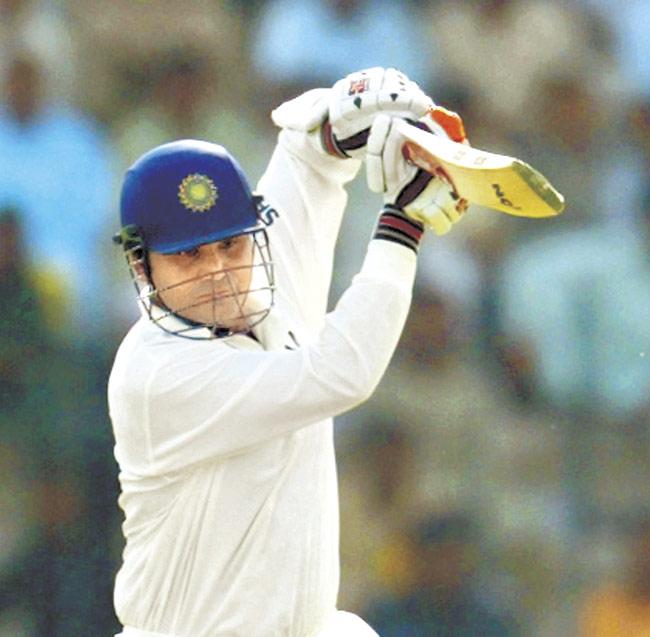
Virender Sehwag hits a boundary during Day One of the opening Test against Pakistan at Multan on March 28, 2004. In 2008, Sehwag scored 319 against SA in Chennai
The evening before the triple ton: He had long conversations with his family members and A N Sharma (his coach). “They all wanted me to go for the triple century but not one of them created any pressure on me.
“It was the confidence of Yuvraj and Laxman that carried me through the day.”
When he reached 300: “He (Sachin Tendulkar) congratulated me, hugged me and said ‘well done, carry on. Many more will come.’ I will never forget that moment. (They were together from 173 to 509). It was my best innings because I had never been at the crease for so long.
I don’t think there was much change in my attitude to life and cricket just because I scored a triple century. The knock certainly boosted my confidence in a big way. What was most crucial? The six that carried me to the mark over mid-wicket.”
Courtesy: The Virender Sehwag Story by Vijay Lokapally. (Published by UBSPD in 2004)
Mark Taylor (Aus)
334* vs Pak; Peshawar, 1998
At lunch, I sat next to Michael Slater. As old Wagga boys and opening partners, we’re pretty good mates and he was really pumped up for me. Before that day we had shared equal top scores in first-class cricket - 219.
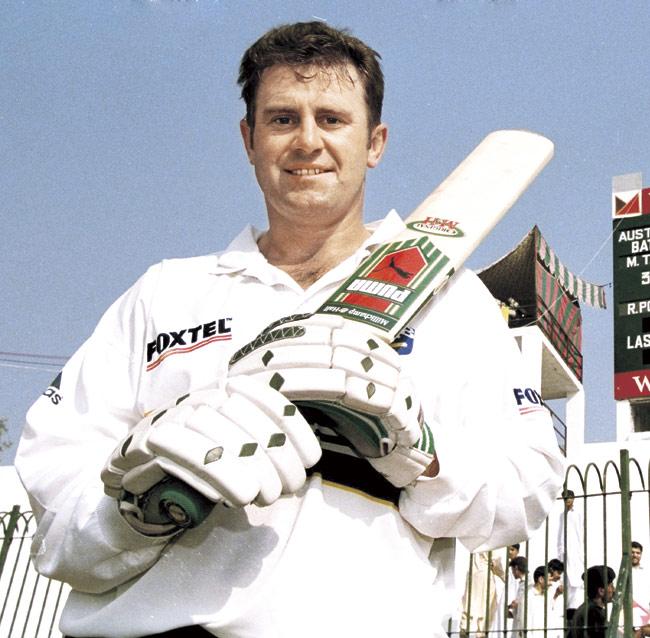
Australia captain Mark Taylor poses for cameramen after his record-equalling score of 334 against Pakistan in Peshawar in 1998. Taylor stayed unbeaten and declared the innings closed at 599 for four
In the short session between lunch and tea, I pushed on to about 260. I had by now reached a point where I honestly didn’t believe I could get out. It was bloody amazing. I had spent a whole six months of my career in 1997 trying to work out how I was going to get a run.
It was only when I got to the 290s that I started to get a little nervous. More mentally tired than anything else, I suppose. And the thought of a Test 300 is a somewhat sobering one for any batsman. Three hundred is the equivalent of a bowler getting 10-for in a game.
At 298, I got a short one from Mushtaq Ahmed. The moment was a perfect example of how well I was hitting them. I hit it exactly where I wanted to hit it, centimetres past the diving cover fieldsman and down to the fence for four.
Courtesy: Time to Declare by Mark Taylor (Published by Pan McMillan Australia in 1999)
 Subscribe today by clicking the link and stay updated with the latest news!" Click here!
Subscribe today by clicking the link and stay updated with the latest news!" Click here!






